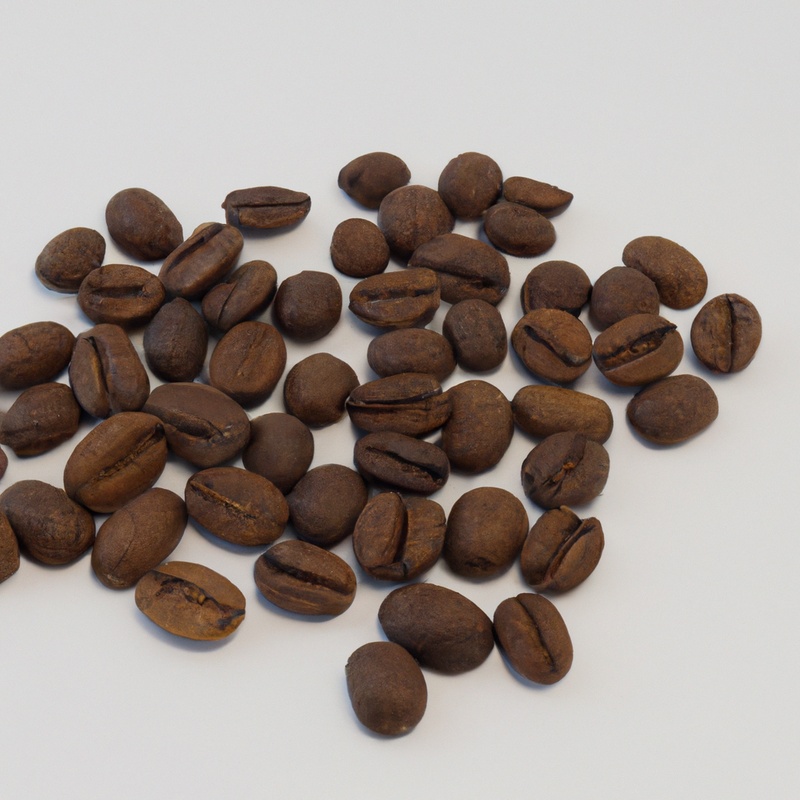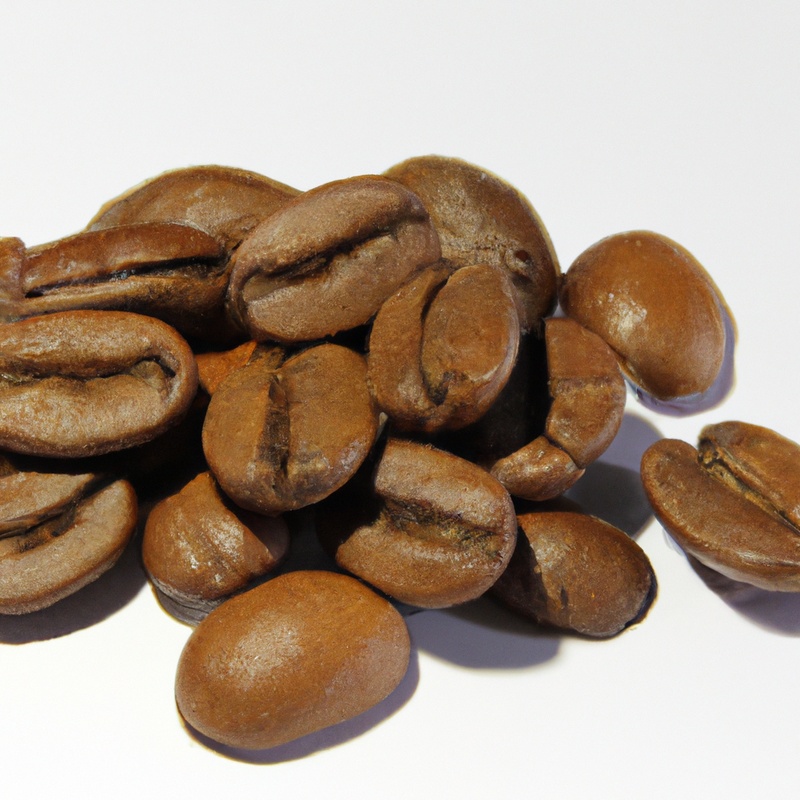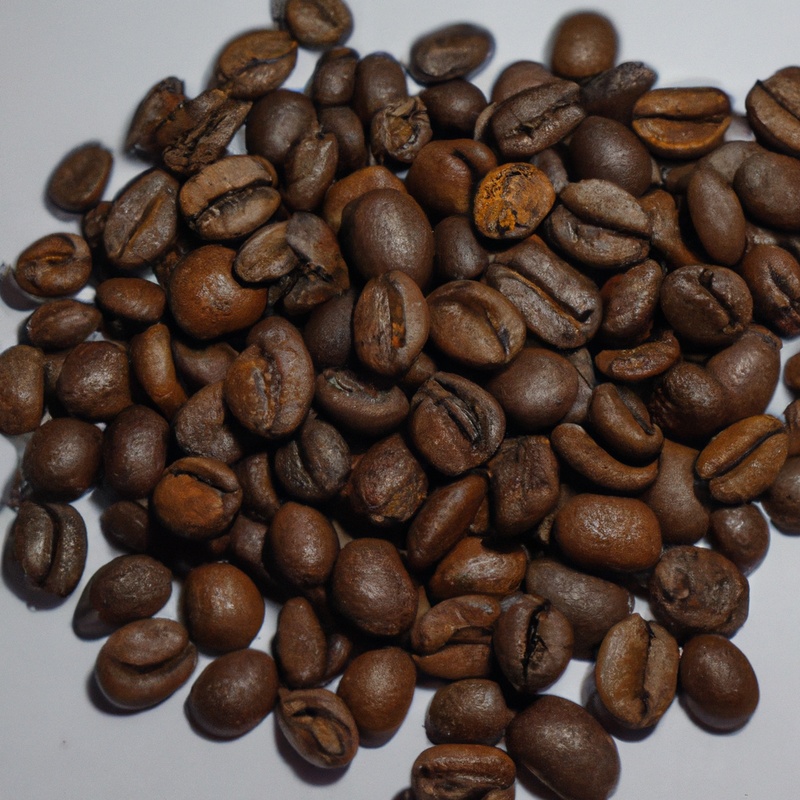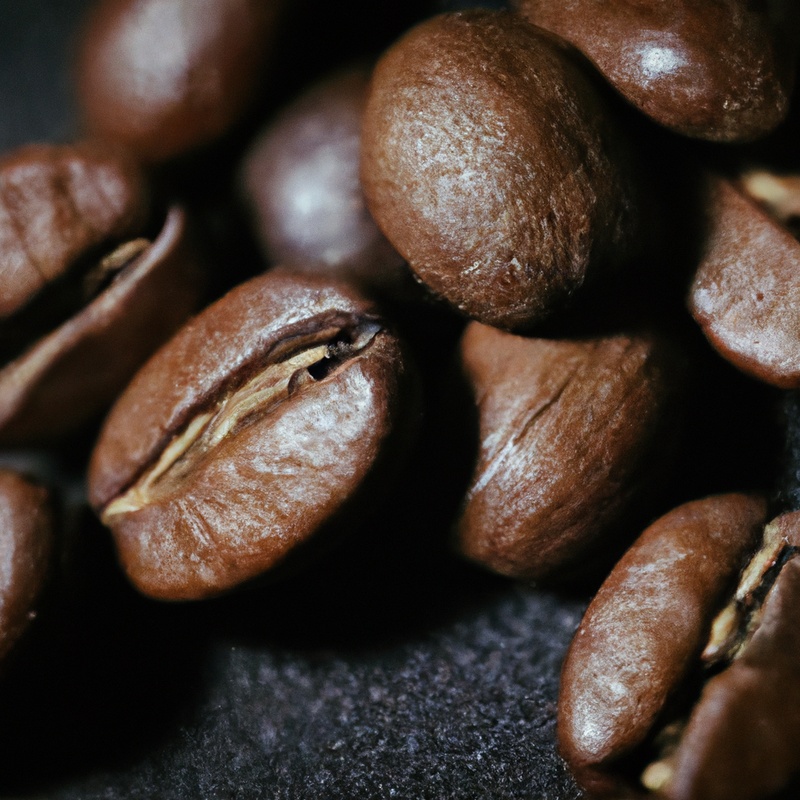Key Takeaways:
- Use freshly roasted coffee beans for the best flavor and aroma.
- Grind the beans just before brewing to preserve the taste.
- Experiment with the coffee-to-water ratio to find your preferred strength.
- Brew with water that is between 195-205°F for optimal extraction.
Are you ready to unlock the secrets of brewing the perfect cup of coffee?
Whether you’re a seasoned coffee connoisseur or a newbie to the caffeinated world, this article will guide you through the art of brewing coffee beans.
From selecting the right beans to understanding grind sizes and brewing techniques, we’ll cover it all.
Get ready to explore the nuances of coffee’s aroma and flavor as we delve into topics like choosing the right roast level and finding the ideal water temperature.
With a little knowledge and a dash of experimentation, you’ll soon be brewing coffee like a true barista.
So grab your favorite mug and let’s dive in!
| Steps | Instructions |
| 1 | Measure and grind the coffee beans |
| 2 | Boil water |
| 3 | Add coffee grounds to the brewing device |
| 4 | Pour water over the coffee grounds |
| 5 | Stir gently |
| 6 | Let steep for a few minutes |
| 7 | Plunge or filter the coffee |
| 8 | Enjoy your freshly brewed coffee! |
Choosing the Right Coffee Beans
To brew a delicious cup of coffee, you need to start by choosing the right coffee beans.
Arabica vs. Robusta: Understanding the Difference
Arabica and Robusta are two popular types of coffee beans with distinct characteristics.
Arabica beans are known for their delicate flavors and aromatic profiles.
They have a smoother taste, often with a hint of sweetness and notes of fruit or chocolate.
On the other hand, Robusta beans are bolder and have a stronger, more bitter taste.
They contain higher levels of caffeine and have a robust flavor that stands up well to milk and sugar.
Understanding the difference between these two types of beans can help you choose the best coffee for your taste preferences.

Deciding on Roast Levels: Light, Medium, or Dark
Deciding on the right roast level for your coffee beans can greatly impact the taste and flavor of your brew. You have three options: light, medium, or dark roast.
- Light Roast: If you prefer a more delicate and nuanced flavor, go for a light roast. It has a higher acidity and retains more of the bean’s natural characteristics.
- Medium Roast: For a balanced and well-rounded cup of coffee, medium roast is your best bet. It strikes a good balance between acidity and sweetness, offering a smooth and flavorful profile.
- Dark Roast: If you enjoy a bolder and more intense flavor, dark roast is the way to go. It has a lower acidity and delivers a fuller body with rich, caramelized notes.
Remember, it all comes down to personal preference. Experiment with different roast levels to find the one that suits your taste buds best.

Considering Single-Origin or Blend Options
When it comes to choosing coffee beans, one decision you’ll need to make is between single-origin and blend options.
Single-origin beans come from a specific region or farm, offering strong and distinctive flavors.
On the other hand, blends are a combination of beans from various origins, providing a balanced taste profile.
Consider your preference for flavor complexity and the specific taste notes you enjoy.
Single-origin beans are great for experiencing the unique characteristics of a particular region, while blends offer a well-rounded flavor profile.
It ultimately depends on your personal taste preferences and the kind of coffee experience you’re seeking.

Grind Size and Consistency
Understanding the Different Grind Sizes for brewing coffee is key to achieving the perfect cup of Joe.
Understanding Different Grind Sizes: Coarse, Medium, and Fine
Understanding Different Grind Sizes: Coarse, Medium, and Fine Grind size plays a key role in coffee brewing.
A coarse grind is rough and chunky, perfect for French press and cold brew methods.
It allows for a longer extraction time and prevents over-extraction.
A medium grind falls between coarse and fine, suitable for drip coffee makers and pour-over methods.
It balances extraction time and flavor extraction.
A fine grind is powdery and ideal for espresso machines and Turkish coffee.
It speeds up extraction and ensures a strong, concentrated flavor.
Knowing which grind size to use for different brewing methods is essential in achieving the desired taste and strength in your coffee.
Determining the Ideal Grind Size for Your Brew Method
Determining the ideal grind size for your brew method is essential for making great-tasting coffee. It impacts the extraction process and the flavors you’ll get in your cup.
Here are some tips to help you find the right grind size for your brew method:
- Experiment: Start with a medium grind size and then adjust it based on taste.
- Consider your brew method: Different methods require different grind sizes. For example, espresso needs a fine grind, while French press requires a coarse grind.
- Pay attention to extraction time: If your coffee brews too quickly, try a finer grind. If it takes too long, go for a coarser grind.
- Invest in a good grinder: A consistent grind size is crucial, so consider investing in a burr grinder for better results.
Remember to always adjust your grind size based on experimentation and taste preferences.
Investing in a Grinder: Manual vs. Electric Options
When it comes to investing in a coffee grinder, you have two main options: manual or electric. Manual grinders require you to use your own power to grind the beans, while electric grinders do the work for you.
Here are a few things to consider when deciding between the two:
- Size and portability: Manual grinders are generally smaller and more portable than electric grinders. If you often travel or want to take your grinder to work, a manual option might be more convenient for you.
- Noise levels: Electric grinders can be quite noisy, which may be a concern if you live in an apartment or have a sleeping baby at home. Manual grinders, on the other hand, produce minimal noise, making them a quieter option.
- Consistency and control: Electric grinders tend to offer more consistency in grind size, making them ideal for brewing methods like espresso. Manual grinders may require more practice to achieve a consistent grind size, but they do offer more control over the grinding process.
Ultimately, the choice between a manual and electric grinder comes down to personal preference and your specific brewing needs. Consider factors like convenience, noise, and desired grind consistency before making your decision.
Happy brewing!
The Brewing Process
Brewing coffee involves extracting flavor from the beans through various methods.
Traditional Drip Brewing: The Basics
With traditional drip brewing, you’ll need a few basic tools: a coffee maker, a filter, and fresh coffee grounds. Here’s how it works:
- Start by filling the water reservoir of your coffee maker with fresh, cold water. Make sure you don’t overfill it.
- Place a filter in the designated slot, making sure it fits securely.
- Measure out the desired amount of coffee grounds based on your taste preferences and the brewing ratio recommended for your machine.
- Pour the coffee grounds into the filter, spreading them out evenly.
- Close the lid of the coffee maker and press the start button.
- The machine will then heat the water and slowly drip it through the coffee grounds, extracting the flavors and aroma as it goes.
- Once all the water has passed through the grounds, your brewed coffee will be ready for you to serve and enjoy.
Remember to clean your coffee maker regularly to prevent any build-up that could affect the taste of your coffee. And don’t forget to experiment with different coffee beans and grind sizes to find your perfect cup.
Happy brewing!
French Press: Steeping for Full Flavor Extraction
With a French press, you can steep your coffee beans to extract their full flavor.
Here’s how to do it:
- Grind your coffee beans to a coarse consistency, as a finer grind can result in a bitter taste.
- Add the ground coffee to the French press, then pour hot water over it.
- Let it steep for about four minutes, allowing the water to extract the flavors from the beans.
- Press down the plunger slowly, separating the grounds from the brewed coffee.
- Pour and enjoy your flavorful, full-bodied cup of coffee!
Pour-Over: Achieving Precision and Control
To achieve precision and control in your pour-over coffee brewing, there are a few key factors to keep in mind. First, the grind size of your coffee beans is crucial – too fine and it may result in over-extraction, while too coarse can lead to under-extraction.
Adjusting your grind size allows you to control the extraction process.
Additionally, water temperature plays a role. Aim for water that is around 195 to 205 degrees Fahrenheit (90 to 96 degrees Celsius) to ensure proper extraction.
Finally, the pouring technique is important for maintaining control.
Pour in a slow, steady stream, evenly saturating the coffee grounds. This helps to promote an even extraction and maximize flavor.
By paying attention to these factors, you can achieve precision and control in your pour-over coffee brewing, resulting in a delicious cup of coffee every time.
Espresso: The Art of Pressure Brewing
Espresso brewing is an art that requires just the right amount of pressure. It’s about using high-pressure machines to force hot water through finely ground coffee beans.
The result is a concentrated and flavorful shot of espresso.
To master the art of pressure brewing, start by grinding your beans to a fine consistency. Then, pack the grounds firmly into the portafilter and attach it to the espresso machine.
Finally, turn on the machine and let the pressure do its magic, extracting the rich flavors from the coffee.
Enjoy!
Water Temperature and Ratios
To brew coffee beans, you need to pay attention to the water temperature and ratios.
Both of these factors have a significant impact on the flavor and quality of your coffee.
Finding the Optimum Water Temperature for Brewing
When brewing coffee, finding the optimum water temperature is key. The recommended range is between 195°F and 205°F (90°C and 96°C).
This temperature allows for proper extraction of flavors without burning or over-extracting the coffee beans.
Experiment with different temperatures within this range to find your preferred taste. Keep in mind that water temperature can affect the strength, acidity, and overall flavor profile of your brew.
It’s worth exploring to find the perfect balance.
Determining the Right Coffee-to-Water Ratio
To determine the right coffee-to-water ratio, a good starting point is 1:16, which means using 1 gram of coffee for every 16 grams of water. However, you can adjust this ratio based on your personal preferences.
If you prefer a stronger brew, try a ratio of 1:15 or even 1:14.
For a milder cup, experiment with a ratio of 1:17 or 1:18. Remember, the ratio is just a guideline, and you can always modify it to find the perfect balance for your taste.
And don’t forget to use freshly ground beans for the best results!
Calculating Brewing Time for Different Methods
Different coffee brewing methods require different brewing times. Here are some general guidelines:
- Pour-Over: For a classic pour-over brew, aim for a total brew time of around 2-4 minutes. This includes pouring water over the grounds and allowing it to drip through.
- French Press: With a French press, steep the coffee for about 4-5 minutes before plunging. This allows the flavors to fully develop.
- Espresso: Brewing an espresso shot typically takes 20-30 seconds. This quick extraction results in a concentrated, intense flavor.
- Cold Brew: Cold brew requires a longer brewing time of 12-24 hours. This slow extraction process creates a smooth, low-acidity brew.
Remember, these times are just general guidelines. Adjusting the brewing time can help you personalize your coffee to your taste preferences.
Enjoy experimenting and finding the perfect brewing time for your preferred method!
Experimenting with Brewing Techniques
Get ready to take your coffee brewing skills to the next level by exploring different brewing techniques. From cold brew to Aeropress and pour-over variations, there are endless possibilities to experiment with.
Cold Brew: A Refreshing Alternative
Cold brew is a delicious and refreshing alternative to hot brewed coffee. It involves steeping coffee grounds in cold water for an extended period of time, usually around 12-24 hours.
The result is a smooth and flavorful coffee with less acidity and bitterness.
To make cold brew, simply combine coffee grounds and water in a pitcher or jar, refrigerate overnight, and strain the next day. It’s great served over ice or mixed with milk for a creamy treat.
Give cold brew a try for a satisfying and cool caffeine fix!
Aeropress: Combining Pressure and Immersion Brewing
Aeropress is a unique brewing method that combines both pressure and immersion.
It allows you to extract flavors from coffee beans effectively, resulting in a rich and smooth cup of coffee.
By using the Aeropress, you can control the pressure exerted on the coffee grounds, which enhances the extraction process.
The immersion aspect ensures that the flavors are evenly extracted throughout the brewing process.
The combination of pressure and immersion in Aeropress brewing creates a delicious and well-balanced coffee experience.
Pour-Over Variations: V60, Chemex, and Kalita Wave
There are three popular pour-over variations that coffee enthusiasts often love to experiment with: the V60, Chemex, and Kalita Wave. Each method offers a unique brewing experience and results in a different flavor profile.
The V60 is known for its fast extraction and clarity, while the Chemex produces a clean and smooth cup of coffee.
The Kalita Wave, on the other hand, provides a balanced and rich taste. Try all three to find your favorite!
Storing and Preserving Your Coffee Beans
To keep your coffee beans fresh, it’s important to store them properly and protect them from air, light, heat, and moisture. Let’s explore the best ways to preserve your coffee beans.
Understanding the Enemies of Freshness: Air, Light, Heat, and Moisture
Air, light, heat, and moisture are the enemies that can rob your coffee beans of their freshness.
Exposure to air can lead to oxidation and spoil the taste.
Light can degrade the flavors and aromas.
Heat can accelerate the breakdown of the coffee’s compounds.
Moisture can cause mold growth and ruin the beans.
To maintain freshness, store coffee beans in airtight containers away from light, heat, and moisture.
It’s best to buy whole beans and grind them as needed for maximum freshness.
Choosing the Right Container for Coffee Storage
To choose the right container for coffee storage, consider these tips:
- Opt for airtight containers: Look for containers that have airtight seals to prevent exposure to air, which can cause the coffee beans to go stale faster.
- Consider opaque containers: Coffee beans are sensitive to light, so choose containers that are opaque or with opaque coatings to shield them from light and maintain their freshness.
- Avoid plastic containers: Plastic can absorb odors and flavors, so it’s best to avoid plastic containers for long-term coffee storage. Instead, go for glass, ceramic, or stainless steel containers.
- Size matters: Choose a container that is the right size for your coffee beans. It should have enough space to hold the beans without leaving too much empty air inside.
- Look for a container with a one-way valve: Coffee beans release carbon dioxide after roasting, and a one-way valve allows it to escape without letting air in, ensuring freshness.
Remember, selecting the right container for coffee storage is important to protect your beans from air, light, and unwanted flavors.
Properly Sealing and Freezing Coffee for Extended Freshness
To properly seal and freeze your coffee beans for extended freshness, follow these steps:
- Use an airtight container: Transfer your coffee beans to an airtight container, such as a mason jar or a resealable bag, to keep out any air and moisture that can degrade the beans.
- Consider portioning: If you have a large quantity of coffee beans, divide them into smaller portions that you can use within a week or two. This will help maintain overall freshness while minimizing exposure to air and moisture.
- Label and date: It’s important to label your containers with the type of coffee beans and the date you sealed them. This way, you can keep track of their freshness and use them in the recommended time frame.
- Freeze the beans: Place the sealed containers in the freezer. Make sure the temperature is set at around 0°F (-18°C to preserve the coffee beans’ flavor and aromas without freezer burn.
- Thaw only what you need: When you’re ready to use the coffee beans, remove the desired portion from the freezer and allow it to thaw at room temperature. Avoid refreezing the beans to maintain their quality.
By properly sealing and freezing your coffee beans, you can extend their freshness and enjoy a delicious cup of coffee any time you want.
Frequently Asked Questions
What is the best coffee-to-water ratio for brewing?
The optimal coffee-to-water ratio for brewing is generally considered to be 1:16. This means using 1 part coffee to 16 parts water.
However, you can adjust this ratio based on your personal taste preferences.
If you prefer a stronger cup, you could try using a ratio of 1:15 or even 1:14. On the other hand, if you prefer a milder flavor, you could go for a ratio of 1:17 or 1:18.
It’s all about finding the balance that suits your palate.
Experiment and adjust until you get the perfect cup of coffee for you.
Can I use pre-ground coffee for brewing?
Yes, you can definitely use pre-ground coffee for brewing! It’s a convenient option for many people, especially those who don’t have access to whole coffee beans or prefer the ease of using pre-ground coffee. Just make sure the coffee is fresh and stored properly in an airtight container to maintain its flavor.
Adjust the amount of coffee and water ratio based on your preferred strength, and enjoy your brewed cup of coffee!
How long can I store coffee beans before they go bad?
Coffee beans can be stored for 1 to 2 weeks after roasting before they start to go bad.
To ensure freshness, store them in an airtight container in a cool, dark place, away from sunlight, moisture, and strong odors.
Avoid freezing or refrigerating the beans as it can affect their flavor.
For the best taste, it’s recommended to use the beans within a week of opening the package.
What is the difference between espresso and regular coffee?
Espresso and regular coffee differ in key ways.
- Brewing method: Espresso is brewed using high pressure and finely ground beans, resulting in a concentrated and strong shot. Regular coffee is brewed by pouring hot water over coarser grounds, producing a milder flavor.
- Extraction time: Espresso is brewed quickly, taking around 20-30 seconds. Regular coffee takes several minutes to brew, allowing for a longer extraction time.
- Serving size: Espresso is served in small shots, typically 1-2 ounces. Regular coffee is usually served in larger cups, ranging from 8 to 16 ounces.
- Taste: The brewing process gives espresso a full-bodied and rich taste, sometimes with a slight bitterness. Regular coffee has a milder taste and a wider range of flavors depending on the bean and brewing method.
- Caffeine content: Due to its concentrated nature, espresso has higher caffeine content per ounce compared to regular coffee. However, a typical serving of regular coffee contains more caffeine overall.
Ultimately, the difference between espresso and regular coffee lies in brewing method, extraction time, serving size, taste, and caffeine content.
Final Verdict
Brewing the perfect cup of coffee goes beyond simply pressing a button.
It requires careful consideration of the coffee beans, grind size, brewing method, water temperature, and storage techniques.
By understanding the differences between Arabica and Robusta beans, selecting the right roast level, and experimenting with various brewing techniques, you can elevate your coffee experience.
It is also crucial to pay attention to water temperature and ratios for optimal extraction.
Finally, proper storage and preservation techniques will ensure that your coffee beans stay fresh and flavorful for as long as possible.
With these tips, you’ll be well on your way to brewing coffee like a true connoisseur.
